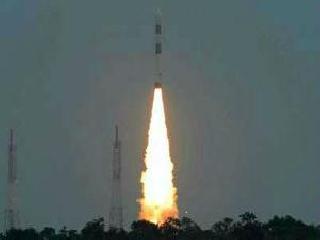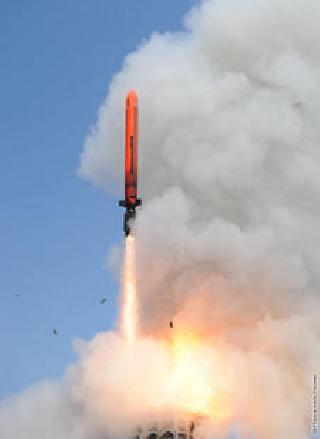
A file photo.
BANGALORE (PTI): Preparations are afoot for the upcoming "big-bang" Mars Orbiter Mission in October-November, an ambitious venture that would shed light on the possible existence of life on the planet besides boosting space agency ISRO's brand equity.
The satellite, which would be launched on board Polar Satellite Launch Vehicle (PSLV-XL), will carry compact science experiments, totalling a mass of 15 kg, according to ISRO officials. There will be five instruments to study Martian surface, atmosphere and mineralogy.
Lyman Alpha Photometer (LAP) is aimed at studying the escape processes of Mars upper atmosphere through Deuterium/Hydrogen, Methane Sensor for MARS (MSM) would look to detect presence of Methane while Martian Exospheric Composition Explorer (MENCA) would study the neutral composition of the Martian upper atmosphere.
MARS Colour Camera (MCC) would undertake optical imaging and TIR imaging spectrometer (TIS) is targetted to map surface composition and mineralogy.
"Mars Orbiter Mission (MOM) spacecraft integration is under progress", an ISRO official told PTI here today. "The spacecraft has to undergo qualification tests for proving space worthiness once the integration is completed".
The mission would help ISRO understand the technological challenges of such an exploration, the possible existence of life and future colonisation of Mars, which is the nearest planet which has most resemblance to earth. This would be India's first mission to a distant planet.
ISRO will launch the mission in October-November. "If launched within the launch window (October 21-November 19, 2013), the spacecraft will travel for least distance to reach Mars", the official said.
This is the immediate next available opportunity for such a mission as Earth and Mars would be coming closer then.
The PSLV-XL (PSLV-C25) will inject the spacecraft from the spaceport of Sriharikota in the 250 X 23000 km orbit.
After leaving earth orbit in November, MOM spacecraft will cruise in deep space for 10 months using its own propulsion system and will reach Mars (Martian transfer trajectory) in September 2014.
The 1350 kg spacecraft subsequently is planned to enter into a 372 km by 80,000 km elliptical orbit around Mars.
"The primary objective of this challenging mission is to establish the Indian technological capabilities to reach the orbit of Mars", says ISRO Chairman K Radhakrishnan, also Secretary in the Department of Space. "A number of technological challenges need to be negotiated for a successful Mars mission".
Critical mission operations and stringent requirements on propulsion, communications and other bus systems of the spacecraft are sure to keep the Bangalore-headquarterd ISRO on tenterhooks.
"One of the technological challenges is to realise related deep space mission planning and communication management at a distance of nearly 400 million km", an ISRO official said.
The spacecraft has been provided with augmented radiation shielding for its prolonged exposure in the Van Allen belt. Due to the long range of the order of 55-400 million km from Earth to Mars, there is a communication delay of 20 minutes one way itself. For this reason, ISRO has built high level of onboard autonomy within Mars orbiter. For Chandrayaan-1, ISRO had to deal with only four lakh kms.
The robustness and reliability of propulsion system is "one order higher" as after leaving the orbit of Earth the system would require to work after almost 300 days. And during this voyage, the system needs to maintain complete integrity so as to capture the Martian orbit.
Capture of the Mars orbit or the Martian insertion is the critical event that would determine the success of this mission, ISRO officials say.
Besides the Mars Orbiter, ISRO has also planned a series of launches of various satellites both from the country and Kourou, French Guiana, during the current financial year.
India's communication satellite INSAT-3D is slated to be launch onboard Ariane 5 rocket from French Guiana by the end of this month while the European spaceport would also launch the GSAT-7 during the year.
GSAT-14 would be launched on board GSLV on August 6 to be followed by SPOT-7, earth observation satellite, which would be put in space by a PSLV in December this year, ISRO has said.
The Indian space agency also planned to undertake GSLV Mark III experimental mission in January next year and launch the country's second navigation satellite IRNSS-1D in March.
IRNSS-1A, the first in the series of seven navigation satellites under the Indian Regional Navigation Satellite System (IRNSS), was launched onboard PSLV C22 from Sriharikota on July 2.
 Previous Article
Previous Article Next Article
Next Article













The Indian Air Force, in its flight trials evaluation report submitted before the Defence Ministry l..
view articleAn insight into the Medium Multi-Role Combat Aircraft competition...
view articleSky enthusiasts can now spot the International Space Station (ISS) commanded by Indian-American astr..
view article